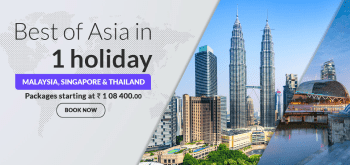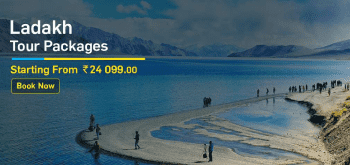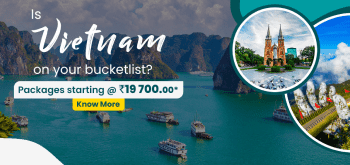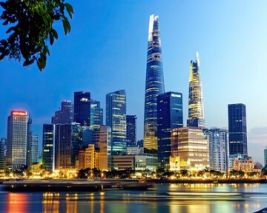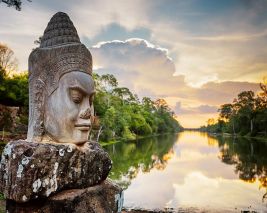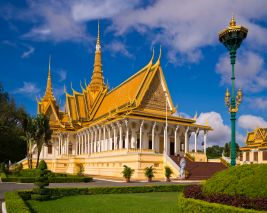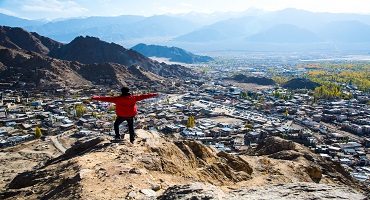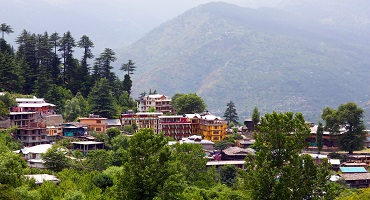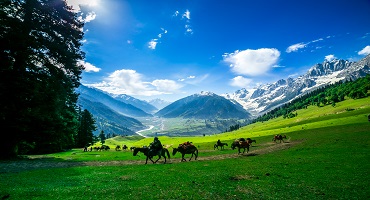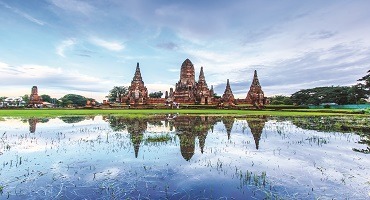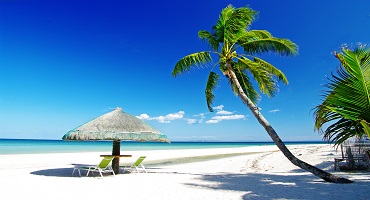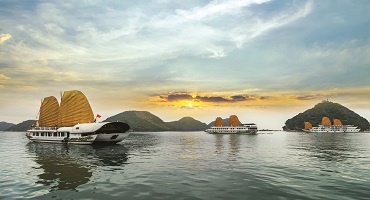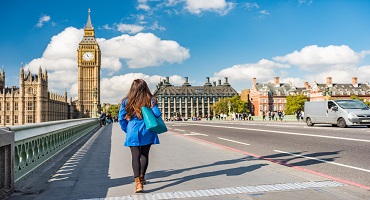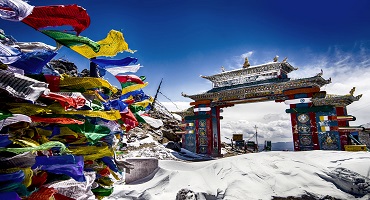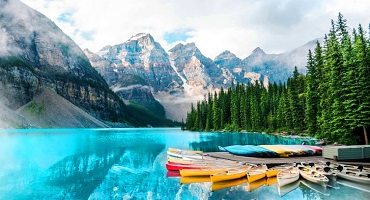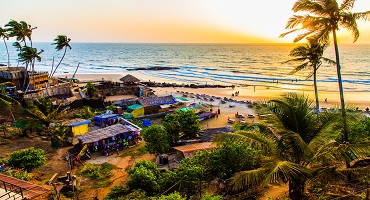Where wonder meets adventure, in beautiful Southeast Asia
With a history of beauty and bloodshed, Cambodia is an enigmatic emerging destination in the heart of tropical Southeast Asia. The country is best known as the home of the sweeping temple complex of Angkor Wat, but it possesses much more in its arsenal of attractions. Pristine beaches hug its extensive shoreline, it boasts natural wonders like the mammoth Tonle Sap Lake and jade-hued Yeak Lom Crater Lake. Captivating cities like Phnom Penh and tranquil towns like Battambang let you immerse yourself in the unique Cambodian culture. Leaving its troubled times behind, the country now ranks as one of the top places to visit in the region, offering a complete holiday experience for all its welcomed visitors.
| Cambodia Tourism : A Quick Overview |
| Continent |
Asia |
| Official Language |
Khmer |
| Dial Code |
++855 |
| Population |
15.3 Million (As of 2019) |
| Currency |
Riel (KHR) |
| Time Zone |
UTC+7 |
| Area |
41,285km² |
Highlights of Cambodia: Ancient wonders in a tropical paradise
Siem Reap:
You can’t find a Cambodian itinerary without Siem Reap, the gateway town to the Angkor Archaeological Park. The expansive temple grounds are a wonder of the world, built between AD 802 and 1432. At the time, it was the largest city to exist. Centuries later, most of the city has been reclaimed by the surrounding forest with only the majestic temples still standing. Spend a few days in Siem Reap town and patiently explore this mesmeric, historic attraction.
Phnom Penh:
The capital of Cambodia has witnessed its ups and downs. It was nearly abandoned under the Khmer Rouge rule, but you wouldn’t be able to imagine it standing there today. What with the livewire streets, spectacular landmarks like the Royal Palace and National Museum and cosmopolitan atmosphere with the best cafés, bars and venues in all the country. Most flights land here so you can soak it all in before venturing to the country sides.
Battambang:
Battambang might be the second largest city in Cambodia after the capital, but it functions at a much slower pace. While the city centre is littered with colonial remnants, the countryside depicts picture perfect rural scenes of villages nestled in paddy fields. Some of the town’s top sites include temples such as Phnom Sampeau, Wat Ek Phnom and Phnom Banan, and the famous bamboo carriage train rides — all of which is best enjoyed at your leisure.
Sihanoukville:
Cambodia’s coastline is a huge draw for visitors, with its picturesque seaside towns and idyllic beaches offering the perfect sun, sand and surf conditions for large parts the year. Sihanoukville is one such town located in the Kompong Som Province, with popular spots like Sokha Beach, Serendipity Beach, Otres Beach and Independence Beach. Along these stretches, you’ll find everything from luxury resorts to boutique guest houses and wooden beach shacks right on the sand.
Tonlé Sap Lake:
The Tonlé Sap is the biggest freshwater lake in Southeast Asia and the most important water body in Cambodia. It is a life and shelter provider, with entire floating villages occupying its waters. Tourists flock to see this fascinating aquatic biosphere, explore villages like Kompong Luong, move around by boat and observe the rich biodiversity around its banks.
Kep:
Yet another of Cambodia’s coastal gems, Kep is a charming town known for its crab farming and pepper plantations. No doubt on the list of places to visit for those who love seafood! But there are other attractions too, like the Koh Tonsay Island just 20 minutes off the shore, the Key National Park and exotic limestone caves near Kompong Trach.
Ratanakiri:
Venture into remote inland Cambodia to experience the country’s adventurous side, in the Ratanakiri region. Here you’ll find some of the best outdoor attractions like the Veun Sai-Siem Pang Conservation Area, Virachey National Park, Yeak Lom Crater Lake and the waterfalls of Chaa Ong and Ka Tieng. They each offer exquisite hiking trails, wildlife interactions and enticing natural surrounds that act as the perfect interlude to all the city and temple sightseeing.
Interesting facts about Cambodia:
- The Angkor Wat temple complex is featured on the Cambodian flag — it is one of only two nations with a building represented on its flag.
- The Cambodian New Year is celebrated in April, a festivity called Choul Chnam Thmey that marks the end of the harvest season.
- Cambodia was a French colony from 1863 to 1953, a period of 90 years, before it became an independent country called the Kingdom of Cambodia.
- Due to the atrocities of the Khmer Rouge rule, Cambodia has very little population over 50 years of age. Today, 63% of its population is under 30.
- There never has been and isn’t currently any McDonald’s in all of Cambodia. Fast Food restaurants notably don’t do well in the country.
- Large medieval cities buried under the forests around Angkor have recently been discovered.
- Insects such as crickets, ants and even tarantulas are part of the traditional Cambodian diet.
- The US Dollar has been adopted as a national currency of Cambodia, given the constantly low value of the Riel.
Location Of Cambodia:
Cambodia is situated within the tropics of Southeast Asia. It shares its borders with Vietnam to the east and southeast, Laos to the northeast and Thailand to the north and west. Is has about 443 km of coastline stretching along the Gulf of Thailand, with some spectacular beaches. Most of the interiors are low-lying plains, surrounded by low rolling mountains. The Tonle Sap freshwater lake and Mekong River are other big geographical features of the country.
Best time to visit In Cambodia:
Cambodia’s climate sees two distinct seasons — Wet Season and Dry Season. Wet Season goes from May to October and sees heavy rainfall on a daily basis. The conditions can be challenging, with plenty of road damage and flooding occurring. However, this is a really beautiful time to visit as the country wears a lush green colour and the Tonle Sap is at its fullest. The Dry Season runs from October to April and is generally considered to be the best time to visit Cambodia, as the favourable temperatures make the outdoors totally accessible — from the beaches to hiking trails and sightseeing attractions.
How to get to Cambodia:
By Air :
The quickest and easiest way to get to Cambodia is by air, with the Phnom Penh International Airport and Siem Reap International Airport both welcoming flights from various parts of the world. While there isn’t a direct flight to Cambodia from India, most airlines offer flights with layovers in neighbouring countries. Cambodia Air is the national carrier, but many other international airlines service this route.
By Rail :
With no direct line from India, trains aren’t the most preferred way to enter Cambodia. Although, tracks do run between Siem Reap and Bangkok, so you could fly into Thailand and board a train from there, for a scenic and affordable journey.
By Road ;
One of the more thrilling ways to reach Cambodia is by road — a long and adventurous ride traversing across multiple countries. However, each country has its own entry and exit formalities that do make driving to Cambodia a journey that needs sufficient planning. Meanwhile, taxis and buses are available from Thailand, Vietnam and Laos.
By Sea ;
Cambodia has the Phnom Penh International Port and the Sihanouk International Seaport, where many passenger boats arrive, including ferries and cruises from Thailand and Vietnam.
`
History: Cambodia’s Intriguing Past
The earliest civilisations in Cambodia are said to date as far back as 4000 BC, but it is between the 3rd and 6th centuries that the first prominent kingdom was formed, called Funan. By 802 AD, Funan made way for the Angkor Empire, under which a flourishing period of 600 years followed. It was under their rule the grand iconic Angkor Wat temple complex and city was built, symbolic of the then prosperous era.
As the years rolled by and the age of colonialism began to grow, Cambodia was soon taken over by the French, under the pretext of a protectorate treaty. The land remained a colony for 90 years, only gaining independence in 1953. While the next few years were ridden on the wave of freedom, by the 1970s, Cambodia’s history took a dark turn under the brutal Khmer Rouge regime. Violence, bloodshed and terror plagued the country for the next four years, with almost 2 million people losing their lives. It was in 1979 that the “reign of terror” ended and the country was finally renamed the State of Cambodia in 1989.
Today, the country has a parliamentary government, with a symbolic monarchic rule. Over the last decade, tourism has rapidly increased and is now one of the main industries.

